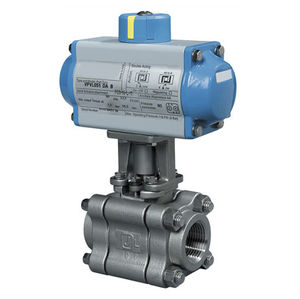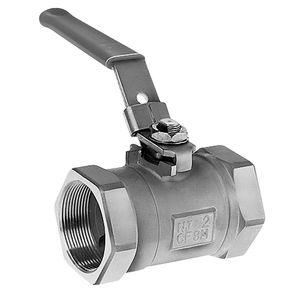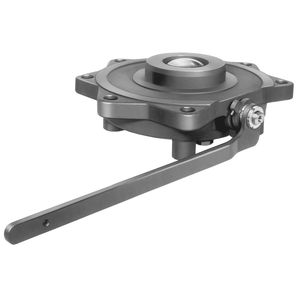
Ball valve T5 series manualfor controlLPG
Add to favorites
Compare this product
Characteristics
- Type
- ball
- Operation
- manual
- Function
- for control
- Media
- LPG, for gas
- Body
- weld, seat, trunnion
- Applications
- for industrial applications, chemical, for water, for oil industry applications, for the gas industry
- Other characteristics
- ISO, ANSI, high-pressure
- DN
Min.: 25 mm
(0.984 in)Max.: 400 mm
(15.748 in)- Temperature
Min.: -200 °C
(-328 °F)Max.: 600 °C
(1,112 °F)
Description
Neles T5 series top entry rotary ball valves are designed to meet the requirements of chemical, petrochemical and refining industries. Valves equipped with unique trunnion mounted Stemball®, and capability to use Neles Q-trim™ technology anti-cavitation and noise attenuation trims, makes the valve series suitable in wide range of demanding heavy duty control applications including anti surge and blow down services.
Features
Robust, heavy duty trunnion bearings
Unique Stemball™ construction, no backlash on stem to ball connection
Face to face according to IEC 534-3 and ANSI/ISA S75.03
Top entry design, capable for easy weld end connections
Application based seat selection options, metal-to-metal and soft seats
Neles Q-trim™ technology for control applications, anti-cavitation and noise reduction
Latest Neles Q2-trim™ option available for gas applications
Low emissions according to ISO 15848
Fire safe certified according to API 607
High Cv, including noise attenuations trims, which are designs self-flushing
Applications
Crude oil
Hot residual oil
LPG, LNG, Natural gas
Hydrocarbon vapors
High pressure industrial gases
Blow down service
Geothermal water and steam
Catalogs
No catalogs are available for this product.
See all of Neles‘s catalogsRelated Searches
- Valve
- Hand valve
- Control valve
- Stainless steel valve
- Ball valve
- Water valve
- Pneumatic valve
- Threaded valve
- Valve with flange
- Stop valve
- Lever control valve
- Electric valve
- ISO valve
- Biogas valve
- Valve with handwheel
- Butterfly valve
- Piston actuator valve
- Wedge gate valve
- Valve for the chemical industry
- Valve for industrial applications
*Prices are pre-tax. They exclude delivery charges and customs duties and do not include additional charges for installation or activation options. Prices are indicative only and may vary by country, with changes to the cost of raw materials and exchange rates.


















